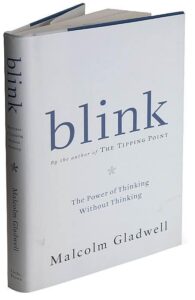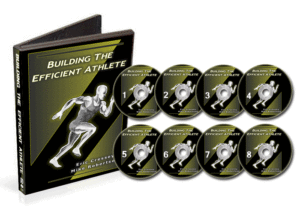Know Your Anatomy
I’m in the process of reading Blink by Malcolm Gladwell. It’s a fantastic book – and one of the foremost messages Gladwell works to convey is that split-second decisions – those made seemingly subconsciously – are in many cases better than those that are thought-out with great time and effort.
As is always the case with a books I read that are seemingly unrelated to strength and conditioning, I got to thinking about how this applies to the industry in which I work – and I started to immediately see applications. The best coaches are the ones who instinctively know exactly what to say to clean up a movement – and this requires not only quick recognition of what’s wrong, but also the ability to know exactly what to say to fix the problem. For instance, you can’t see an athlete squatting who is breaking at the knees instead of the hips, and then go home and think about it for 24 hours before coming back to coach the movement correctly.
In one instance, Gladwell makes his point in the context of basketball:
Basketball is an intricate, high-speed game filled with split-second, spontaneous decisions. But that spontaneity is possible only when everyone first engages in hours of highly repetitive and structured practice – perfecting their shooting, dribbling, and passing, and running plays over and over again – and agrees to play a carefully defined role on the court.
In other words, if you want to be successful in a challenge that depends on effective split-second decision-making, you need to have prepared yourself in terms of knowledge and practice. Each week, I get close to a dozen emails from up-and-comers in the industry asking for my advice on how to advance their career, and I give them three pieces of advice that – if carried out – will immediately set them apart from the rest of their peers.
Step 1 is to master anatomy. You can’t be a mechanic if you don’t know where the engine is, or what its constituent parts are. Memorization is boring, but you have to do it; it is the basis for everything that you do. If you are a fitness professional – or aspiring to be one – and you can’t answer the following three questions, then you have room to improve:
a. What are three flexors of the hip?
b. What are the points of attachment of the latissimus dorsi?
c. What are three muscles that attach to the coracoid process of the scapula?
I am not trying to put myself on a high-horse, as I’m far from knowing every subtle intricacy of the human body. I do, however, know enough to realize that I am going to keep learning and it’s always going to keep benefiting my clients.
While any anatomy book will do, I’m partial to Kinetic Anatomy for those looking to get a good start. And, if you have the opportunity to take a course in Gross Anatomy, definitely do so – or at the very least, check out the Bodies exhibit when it’s at a museum near you.
Step 2 is to take that anatomy foundation and apply it in a function context. In other words, what happens when one muscle doesn’t do its job? How can poor mobility in one area lead to instability elsewhere? How can certain muscles be both synergists and antagonists, depending on the plane of motion in question?
Functional anatomy is largely the reason that Mike Robertson and I made the Building the Efficient Athlete DVD set; we felt strongly that there was a need to improve on the rudimentary anatomy teaching that most fitness professionals receive in certification and academic programs.
Step 3 is to acquire an internship where you can watch others apply their knowledge and get practice applying your own in a controlled environment. With an internship, you learn about professionalism, coaching cues, and programming – and you learn how working with clients and athletes effectively blends your knowledge with your everyday demeanor. As an extension of this step, I feel strongly that it’s important to get out during your career and interact with as many colleagues as possible to see what bits of wisdom you can clean from their coaching styles. And, of course, attend seminars, and read everything you can get your hands on.
Once you’ve gotten through step 3, it is time to get out there and practice in the “real world” by interacting with as many clients as you possibly can. These individuals will all have something to teach, and it’s a chance for you to apply everything you’ve learned.
One thing you will notice is completely absent from my recommendations is me encouraging people to go out and get more certifications. Frankly, a certification is simply a foot in the door, and there aren’t any out there – even the so-called “gold standards” – that impress me. If you are going to spend hundreds of dollars with the intention of becoming a better professional, there are much better investments than just paying for a certification that merely amounts to a piece of paper you can frame. I’d rather spend the money on books, seminars, or travel expenses to see people who actually coach.
Take care of those three steps, and in my eyes, you’ll be well on your way to the “subconscious mastery” to which I alluded earlier.
A Quick Note on a Great Sale for a Great Cause
Speaking of Building the Efficient Athlete, as you may recall, I announced a sweet sale last week where a small charitable, tax-free donation can save you 20% on a boatload of our products. This offer ends on Thursday at midnight, so don’t delay. You can find the details HERE.
New Blog Content
Random Monday Thoughts
A Little Different Push-up Flavor Around Cressey Performance
Being Up-Front on the Rear
Healthy Knees, Steady Progress
Random Friday Thoughts
All the Best,
EC




